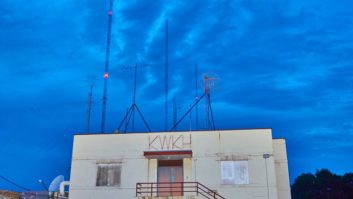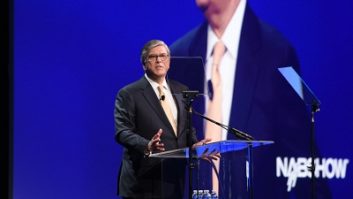Notes on NRSC-5 and IBOC
Aug 1, 2005 12:00 PM
When the FCC asked for comments on NRSC-5, we asked readers to share some of their thoughts with us. The response was overwhelming. Like the comments received by the FCC, there are mixed feelings about the technology and the standard.
I filed a brief comment to the FCC saying that the extended hybrid FM option should allow use of the S2 sidebands (69-101kHz) if the station would give up use of its analog SCAs. I estimate that this would extend the data budget in the hybrid mode by about 48kb/s to an option of 192kb/s. If interference with the main analog FM signal is a concern then a guard band between the analog and digital carriers could be established by slightly reducing analog modulation. This gives broadcasters the tradeoff similar to what happens with analog SCAs: a slight reduction in loudness for more service options.
Am I right to think that many broadcasters would take the trade, especially if a successful business model can be established for use of this option? As a public broadcaster it might mean, for example, that we could offer the enticement of special services (two or three multicast channels instead of just one) offered by subscription on this extended bandwidth in return for a premium level of pledge. Many other options are possible (such as more extensive audio on demand) which do not fit into the 144kb/s budget of the extended hybrid mode as it is now proposed but would be possible at 192kb/s. Those options would not have to be put off into a distant all-digital-mode future if digital bandwidth was increased in the extended hybrid mode. Let’s call this option super-extended mode. A station would then have options of 96, 144, 192 or 288kb/s (all digital) and could move in more appropriate and achievable stages toward the all-digital mode. In fact, I think the rules should give us as much flexibility as possible in choosing between analog and digital bandwidth. If a station was willing to downgrade its analog signal even more, let us say go to a 12kHz mono and reduce its analog modulation 6dB to get another 48kb/s of digital bandwidth, then the rules should be flexible enough to accommodate that possibility too. I would like to see a graduated transition where as the digital bandwidth becomes more used and generates more services and revenues, the analog signal gracefully degrades and finally disappears. What’s wrong with that vision?
Tom Ammons
broadcast technician
WQED-FM
Pittsburgh
This is a technology that will financially ruin small town stations such as mine. We are unable to pay the $5,000 licensing per station now, much less the higher fees later. Then we are faced with the upgrade in equipment to broadcast IBOC. Again the financials do not work.
Overall, we estimate that if we licensed today that the cost would be in the range of $125,000. In a market that barely breaks even, how could we possibly handle this financially?
I posed this question to the IBOC people at NAB. The ultimate answer was, “we do not expect the small market to make this move.” What then do we tell listeners who have ordered cars with IBOC radio and want to listen to IBOC? The simple answer is, “we lose!” No more listener.
Then there is the engineering and maintenance issue. How do we perform these functions when there are no qualified engineers available?
These are legitimate concerns for small operators. The entire IBOC thing appears to be driven by the large multi-station groups.
Tommie Dodd
president/GM
KQIK-AM/FM
Lakeview, OR
If you go back in broadcast history to the days of yesteryear, TV and FM stereo were technologies that were not proprietary. I believe the inventor of TV wanted to patent the technology but never before IBOC has that been allowed to happen.
So here comes Ibiquity with IBOC. According to the trades if you signed on last year it was $5,000 but if you wait a couple of years it will be $25,000. Then they said you would have to pay a license fee just like your ASCAP and BMI at the prevailing rate to �reup� or whatever you want to call it. The trades said Ibiquity gave Clear Channel unnamed incentives and the head engineer at Clear Channel is on the NRSC board. I don’t know all the details but this doesn’t pass the smell test. As my grandmother would say, “There’s something rotten in Denmark.”
So Clear Channel is pushing for 6kHz music audio to diminish sidebands but I personally can hear IBOC hash when I tune my car radio to 1380 in Columbia, SC, which is five or six miles away from Clear Channel’s WCOS-AM 1400. Why 1380? Because I own a simple country station doing live radio with real people (imagine that) not that far away broadcasting on 1380 AM in Bishopville, SC.
So the technicals look doubtful, and the money trail? It will make your head spin. Is this pathetic drama going to have the same sad conclusion as Braveheart? Mel Gibson playing William Wallace got pulled apart on the rack in the end. Are you with me? We’ve got to stop this evil thing.
James D. Jenkins
owner/GM
WAGS Radio
Bishopville, SC









